Your personal Tumblr library awaits
Milky Way - Blog Posts
Does anyone know a lot about the planets that could potentially support life? Just straight info dump on me. Cause I tried doing research and got confused, but I really want to know about them
Scary puppy

The Close-Up Face of a Spider.

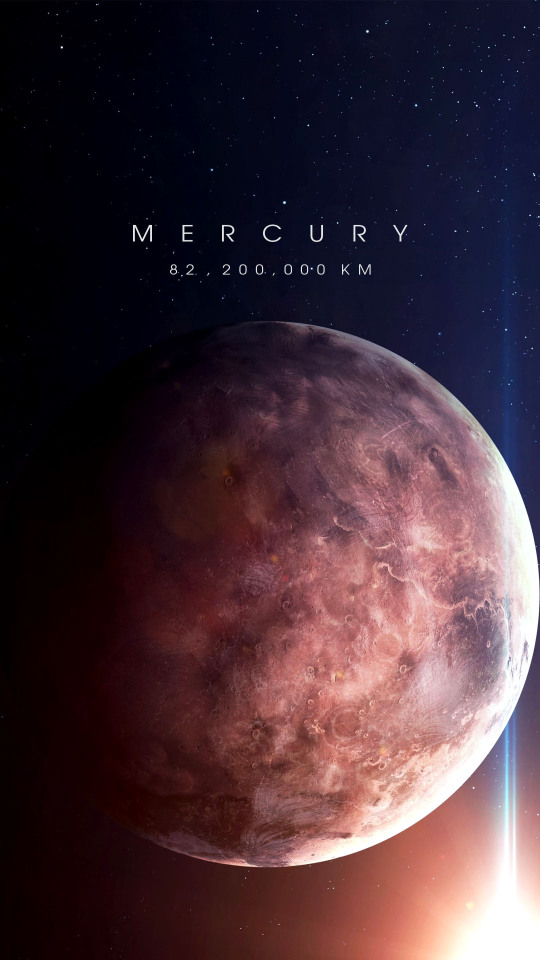



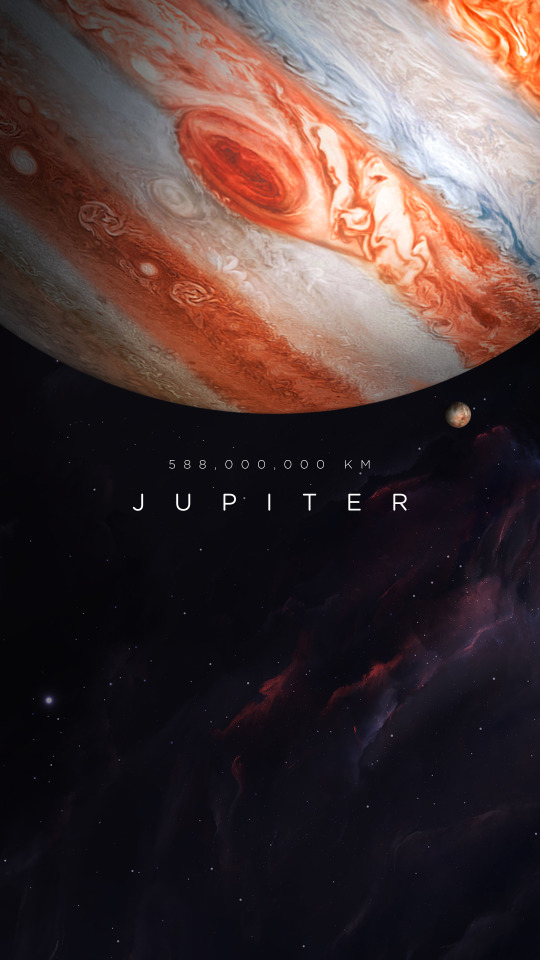
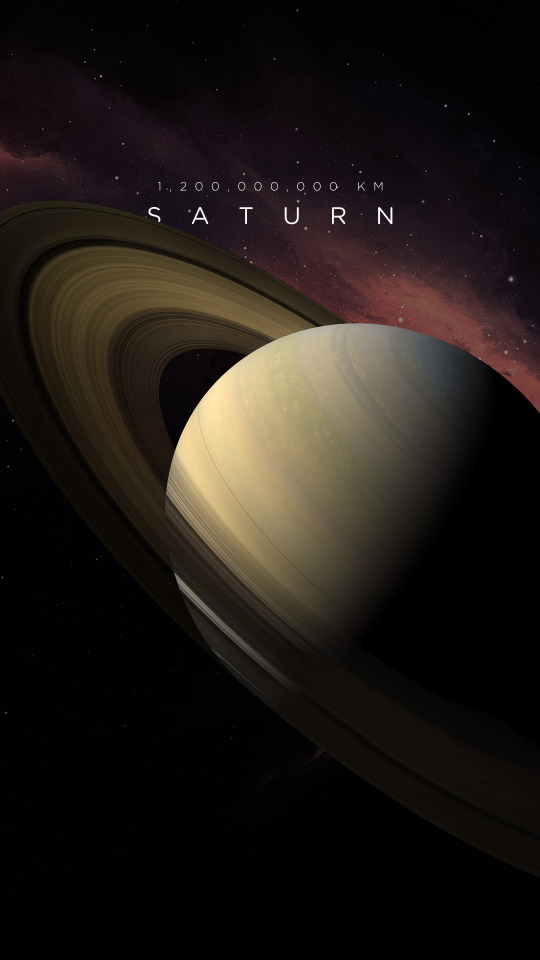
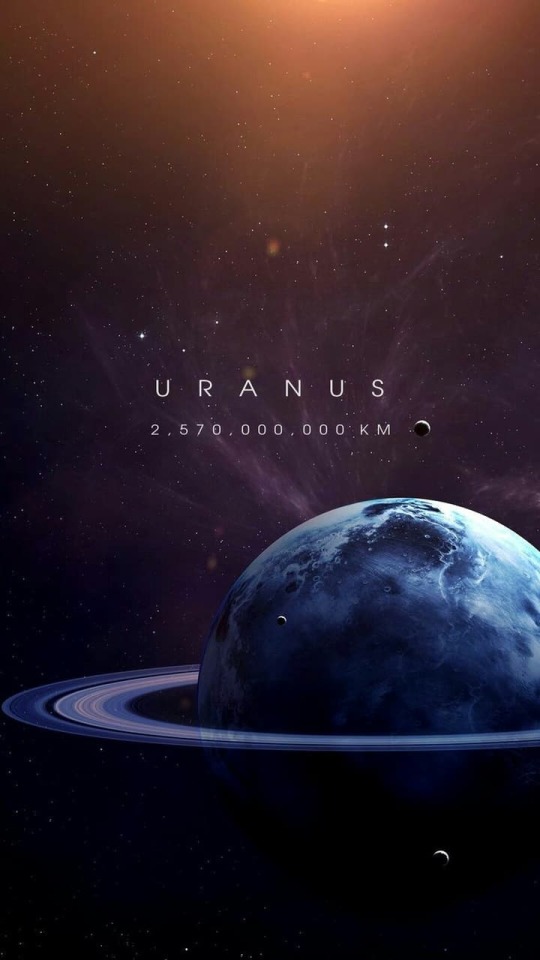

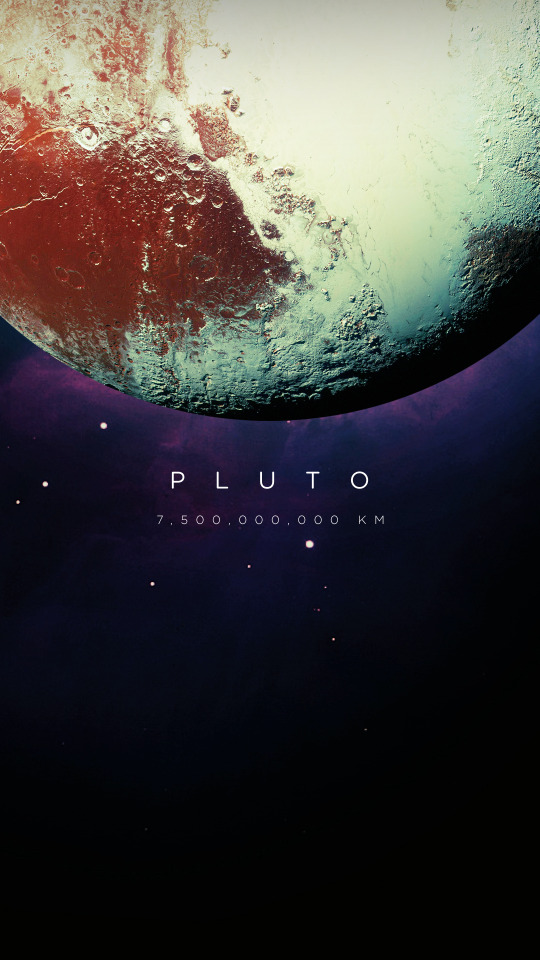
Our Amazing Solar System
Rate my ❤😉


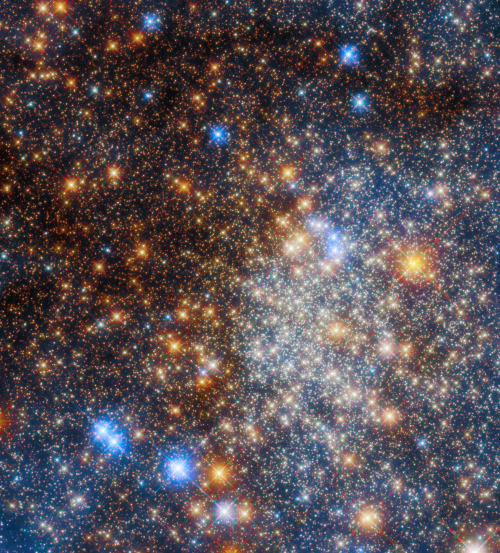
Pumpkin space latte, anyone? ☕
Hubble captured this festive array of stars, Terzan 12, found in the Milky Way about 15,000 light-years from Earth. The stars in this cluster are bound together by gravity in a sphere-like shape and are shrouded in gas and dust. As the starlight travels through that gas and dust to Earth, blue light scatters, leaving the redder wavelengths to come through.
Download the full-resolution image here.
Make sure to follow us on Tumblr for your regular dose of space!
Our Weird and Wonderful Galaxy of Black Holes
Black holes are hard to find. Like, really hard to find. They are objects with such strong gravity that light can’t escape them, so we have to rely on clues from their surroundings to find them.
When a star weighing more than 20 times the Sun runs out of fuel, it collapses into a black hole. Scientists estimate that there are tens of millions of these black holes dotted around the Milky Way, but so far we’ve only identified a few dozen. Most of those are found with a star, each circling around the other. Another name for this kind of pair is a binary system.That’s because under the right circumstances material from the star can interact with the black hole, revealing its presence.
The visualization above shows several of these binary systems found in our Milky Way and its neighboring galaxy. with their relative sizes and orbits to scale. The video even shows each system tilted the way we see it here from our vantage point on Earth. Of course, as our scientists gather more data about these black holes, our understanding of them may change.

If the star and black hole orbit close enough, the black hole can pull material off of its stellar companion! As the material swirls toward the black hole, it forms a flat ring called an accretion disk. The disk gets very hot and can flare, causing bright bursts of light.

V404 Cygni, depicted above, is a binary system where a star slightly smaller than the Sun orbits a black hole 10 times its mass in just 6.5 days. The black hole distorts the shape of the star and pulls material from its surface. In 2015, V404 Cygni came out of a 25-year slumber, erupting in X-rays that were initially detected by our Swift satellite. In fact, V404 Cygni erupts every couple of decades, perhaps driven by a build-up of material in the outer parts of the accretion disk that eventually rush in.

In other cases, the black hole’s companion is a giant star with a strong stellar wind. This is like our Sun’s solar wind, but even more powerful. As material rushes out from the companion star, some of it is captured by the black hole’s gravity, forming an accretion disk.

A famous example of a black hole powered by the wind of its companion is Cygnus X-1. In fact, it was the first object to be widely accepted as a black hole! Recent observations estimate that the black hole’s mass could be as much as 20 times that of our Sun. And its stellar companion is no slouch, either. It weighs in at about 40 times the Sun.

We know our galaxy is peppered with black holes of many sizes with an array of stellar partners, but we've only found a small fraction of them so far. Scientists will keep studying the skies to add to our black hole menagerie.
Curious to learn more about black holes? Follow NASA Universe on Twitter and Facebook to keep up with the latest from our scientists and telescopes.
Make sure to follow us on Tumblr for your regular dose of space: http://nasa.tumblr.com
Cosmic Alphabet Soup: Classifying Stars

If you’ve spent much time stargazing, you may have noticed that while most stars look white, some are reddish or bluish. Their colors are more than just pretty – they tell us how hot the stars are. Studying their light in greater detail can tell us even more about what they’re like, including whether they have planets. Two women, Williamina Fleming and Annie Jump Cannon, created the system for classifying stars that we use today, and we’re building on their work to map out the universe.

By splitting starlight into spectra – detailed color patterns that often feature lots of dark lines – using a prism, astronomers can figure out a star’s temperature, how long it will burn, how massive it is, and even how big its habitable zone is. Our Sun’s spectrum looks like this:

Astronomers use spectra to categorize stars. Starting at the hottest and most massive, the star classes are O, B, A, F, G (like our Sun), K, M. Sounds like cosmic alphabet soup! But the letters aren’t just random – they largely stem from the work of two famous female astronomers.

Williamina Fleming, who worked as one of the famous “human computers” at the Harvard College Observatory starting in 1879, came up with a way to classify stars into 17 different types (categorized alphabetically A-Q) based on how strong the dark lines in their spectra were. She eventually classified more than 10,000 stars and discovered hundreds of cosmic objects!

That was back before they knew what caused the dark lines in spectra. Soon astronomers discovered that they’re linked to a star’s temperature. Using this newfound knowledge, Annie Jump Cannon – one of Fleming’s protégés – rearranged and simplified stellar classification to include just seven categories (O, B, A, F, G, K, M), ordered from highest to lowest temperature. She also classified more than 350,000 stars!

Type O stars are both the hottest and most massive in the new classification system. These giants can be a thousand times bigger than the Sun! Their lifespans are also around 1,000 times shorter than our Sun’s. They burn through their fuel so fast that they only live for around 10 million years. That’s part of the reason they only make up a tiny fraction of all the stars in the galaxy – they don’t stick around for very long.

As we move down the list from O to M, stars become progressively smaller, cooler, redder, and more common. Their habitable zones also shrink because the stars aren’t putting out as much energy. The plus side is that the tiniest stars can live for a really long time – around 100 billion years – because they burn through their fuel so slowly.

Astronomers can also learn about exoplanets – worlds that orbit other stars – by studying starlight. When a planet crosses in front of its host star, different kinds of molecules in the planet’s atmosphere absorb certain wavelengths of light.
By spreading the star’s light into a spectrum, astronomers can see which wavelengths have been absorbed to determine the exoplanet atmosphere’s chemical makeup. Our James Webb Space Telescope will use this method to try to find and study atmospheres around Earth-sized exoplanets – something that has never been done before.

Our upcoming Nancy Grace Roman Space Telescope will study the spectra from entire galaxies to build a 3D map of the cosmos. As light travels through our expanding universe, it stretches and its spectral lines shift toward longer, redder wavelengths. The longer light travels before reaching us, the redder it becomes. Roman will be able to see so far back that we could glimpse some of the first stars and galaxies that ever formed.
Learn more about how Roman will study the cosmos in our other posts:
Roman’s Family Portrait of Millions of Galaxies
New Rose-Colored Glasses for Roman
How Gravity Warps Light
Make sure to follow us on Tumblr for your regular dose of space!
Visual 'Autocorrect' for NASA Space Telescope
Telescopes located both on the ground and in space continue to dazzle us with incredible images of the universe. We owe these sharp vistas to a series of brilliant astronomers, including Andrea Ghez – an astrophysicist and professor at UCLA – and the “Mother of Hubble,” Nancy Grace Roman.
Did you know that stars don’t actually twinkle? They only look like they do because their light has to travel through our turbulent atmosphere to reach our eyes. As the atmosphere shifts and swirls around, the light from distant stars is slightly refracted, or bent, in different directions. Sometimes it’s directed right at us, but sometimes it’s directed a bit to the side.

It's like someone’s shining a flashlight toward you but moving it around slightly. Sometimes the beam is pointed right at you and appears very bright, and sometimes it's pointed a bit to either side of you and it appears dimmer. The amount of light isn't really changing, but it looks like it is.

This effect creates a problem for ground-based telescopes. Instead of seeing sharp images, astronomers get fuzzy pictures. Special tech known as adaptive optics helps resolve pictures of space so astronomers can see things more clearly. It’s even useful for telescopes that are in space, above Earth’s atmosphere, because tiny imperfections in their optics can blur images, too.

In 2020, Andrea Ghez was awarded a share of the Nobel Prize in Physics for devising an experiment that proved there’s a supermassive black hole embedded in the heart of our galaxy – something Hubble has shown is true of almost every galaxy in the universe! She used the W. M. Keck Observatory’s adaptive optics to track stars orbiting the unseen black hole.

A woman named Nancy Grace Roman, who was NASA’s first chief astronomer, paved the way for telescopes that study the universe from space. An upcoming observatory named in her honor, the Nancy Grace Roman Space Telescope, will use a special kind of adaptive optics in its Coronagraph Instrument, which is a technology demonstration designed to block the glare from host stars and reveal dimmer orbiting planets.
Roman’s Coronagraph Instrument will come equipped with deformable mirrors that will serve as a form of visual "autocorrect" by measuring and subtracting starlight in real time. The mirrors will bend and flex to help counteract effects like temperature changes, which can slightly alter the shape of the optics.

Other telescopes have taken pictures of enormous, young, bright planets orbiting far away from their host stars because they’re usually the easiest ones to see. Taking tech that’s worked well on ground-based telescopes to space will help Roman photograph dimmer, older, colder planets than any other observatory has been able to so far. The mission could even snap the first real photograph of a planet like Jupiter orbiting a Sun-like star!
Find out more about the Nancy Grace Roman Space Telescope on Twitter and Facebook, and learn about the person from which the mission draws its name.
Make sure to follow us on Tumblr for your regular dose of space!
Photographing Planets with the Roman Space Telescope
Nearly 100 years ago, astronomer Bernard Lyot invented the coronagraph – a device that made it possible to recreate a total solar eclipse by blocking the Sun’s light. That helped scientists study the Sun’s corona, which is the outermost part of our star’s atmosphere that’s usually hidden by bright light from its surface.

Our Nancy Grace Roman Space Telescope, now under construction, will test out a much more advanced version of the same thing. Roman’s Coronagraph Instrument will use special masks to block the glare from host stars but allow the light from dimmer, orbiting planets to filter through. It will also have self-flexing mirrors that will measure and subtract starlight automatically.

This glare-blocking prowess is important because planets can be billions of times dimmer than their host stars! Roman’s high-tech shades will help us take pictures of planets we wouldn’t be able to photograph using any other current telescopes.

Other observatories mainly use this planet-hunting method, called direct imaging, from the ground to photograph huge, bright planets called “super-Jupiters” in infrared light. These worlds can be dozens of times more massive than Jupiter, and they’re so young that they glow brightly thanks to heat left over from their formation. That glow makes them detectable in infrared light.

Roman will take advanced planet-imaging tech to space to get even higher-quality pictures. And while it’s known for being an infrared telescope, Roman will actually photograph planets in visible light, like our eyes can see. That means it will be able to see smaller, older, colder worlds orbiting close to their host stars. Roman could even snap the first-ever image of a planet like Jupiter orbiting a star like our Sun.
Astronomers would ultimately like to take pictures of planets like Earth as part of the search for potentially habitable worlds. Roman’s direct imaging efforts will move us a giant leap in that direction!

And direct imaging is just one component of Roman’s planet-hunting plans. The mission will also use a light-bending method called microlensing to find other worlds, including rogue planets that wander the galaxy untethered to any stars. Scientists also expect Roman to discover 100,000 planets as they cross in front of their host stars!

Find out more about the Nancy Grace Roman Space Telescope on Twitter and Facebook, and about the person from which the mission draws its name.
Make sure to follow us on Tumblr for your regular dose of space!
Our Galaxy is Caught Up in a Giant Cosmic Cobweb! 🕸️

If we could zoom waaaay out, we would see that galaxies and galaxy clusters make up large, fuzzy threads, like the strands of a giant cobweb. But we'll work our way out to that. First let's start at home and look at our planet's different cosmic communities.
Our home star system
Earth is one of eight planets — Mercury, Venus, Earth, Mars, Jupiter, Saturn, Uranus, and Neptune — that orbit the Sun. But our solar system is more than just planets; it also has a lot of smaller objects.
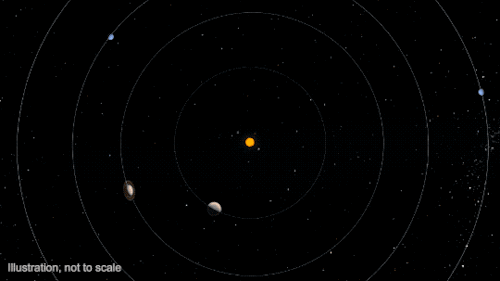
An asteroid belt circles the Sun between Mars and Jupiter. Beyond Neptune is a doughnut-shaped region of icy objects called the Kuiper Belt. This is where dwarf planets like Pluto and Makemake are found and is likely the source of short-period comets (like Haley’s comet), which orbit the Sun in less than 200 years.
Scientists think that even farther out lies the Oort Cloud, also a likely source of comets. This most distant region of our solar system is a giant spherical shell storing additional icy space debris the size of mountains, or larger! The outer edge of the Oort Cloud extends to about 1.5 light-years from the Sun — that’s the distance light travels in a year and a half (over 9 trillion miles).

Sometimes asteroids or comets get ejected from these regions and end up sharing an orbit with planets like Jupiter or even crossing Earth’s orbit. There are even interstellar objects that have entered the inner solar system from even farther than the Oort Cloud, perhaps coming all the way from another star!
Our home galaxy
Let's zoom out to look at the whole Milky Way galaxy, which contains more than 100 billion stars. Many are found in the galaxy’s disk — the pancake-shaped part of a spiral galaxy where the spiral arms lie. The brightest and most massive stars are found in the spiral arms, close to their birth places. Dimmer, less massive stars can be found sprinkled throughout the disk. Also found throughout the spiral arms are dense clouds of gas and dust called nebulae. The Sun lies in a small spiral arm called the Orion Spur.

The Milky Way’s disk is embedded in a spherical “halo” about 120,000 light-years across. The halo is dotted with globular clusters of old stars and filled with dark matter. Dark matter doesn’t emit enough light for us to directly detect it, but we know it’s there because without its mass our galaxy doesn’t have enough gravity to hold together!
Our galaxy also has several orbiting companion galaxies ranging from about 25,000 to 1.4 million light-years away. The best known of these are the Large and Small Magellanic Clouds, which are visible to the unaided eye from Earth’s Southern Hemisphere.
Our galactic neighborhood

The Milky Way and Andromeda, our nearest neighboring spiral galaxy, are just two members of a small group of galaxies called the Local Group. They and the other members of the group, 50 to 80 smaller galaxies, spread across about 10 million light-years.
The Local Group lies at the outskirts of an even larger structure. It is just one of at least 100 groups and clusters of galaxies that make up the Virgo Supercluster. This cluster of clusters spans about 110 million light-years!

Galaxies aren’t the only thing found in a galaxy cluster, though. We also find hot gas, as shown above in the bright X-ray light (in pink) that surrounds the galaxies (in optical light) of cluster Abell 1413, which is a picturesque member of a different supercluster. Plus, there is dark matter throughout the cluster that is only detectable through its gravitational interactions with other objects.
The Cosmic Web
The Virgo Supercluster is just one of many, many other groups of galaxies. But the universe’s structure is more than just galaxies, clusters, and the stuff contained within them.

For more than two decades, astronomers have been mapping out the locations of galaxies, revealing a filamentary, web-like structure. This large-scale backbone of the cosmos consists of dark matter laced with gas. Galaxies and clusters form along this structure, and there are large voids in between.
The scientific visualizations of this “cosmic web” look a little like a spider web, but that would be one colossal spider! <shudder>

And there you have the different communities that define Earth’s place in the universe. Our tiny planet is a small speck on a crumb of that giant cosmic web!
Want to learn even more about the structures in the universe? Check out our Cosmic Distance Scale!
Make sure to follow us on Tumblr for your regular dose of space.

Our universe is FULL of strange and surprising things.
And luckily, our Hubble Space Telescope is there to be our window to the unimaginable! Hubble recently ran into an issue with its payload computer which controls and coordinates science instruments onboard the spacecraft. On July 16, teams successfully switched to backup hardware to compensate for the problem! A day later, the telescope resumed normal science operations. To celebrate, we’re taking you back to 2016 when our dear Hubble captured perhaps one of the most intriguing objects in our Milky Way galaxy: a massive star trapped inside a bubble! The star inside this Bubble Nebula burns a million times brighter than our Sun and produces powerful gaseous outflows that howl at more than four million miles per hour. Based on the rate the star is expending energy, scientists estimate in 10 to 20 million years it will explode as a supernova. And the bubble will succumb to a common fate: It’ll pop.
New Rose-Colored Glasses for the Roman Space Telescope
Big news for our Nancy Grace Roman Space Telescope! Thanks to some new “shades” – an infrared filter that will help us see longer wavelengths of light – the mission will be able to spot water ice on objects in the outer solar system, see deeper into clouds of gas and dust, and peer farther across space. We’re gearing up for some super exciting discoveries!
Rocks on the rocks
You probably know that our solar system includes planets, the Sun, and the asteroid belt in between Mars and Jupiter – but did you know there’s another ‘belt’ of small objects out past Neptune? It’s called the Kuiper belt, and it’s home to icy bodies that were left over from when our solar system formed.

A lot of the objects there are like cosmic fossils – they haven’t changed much since they formed billions of years ago. Using its new filter, Roman will be able to see how much water ice they have because the ice absorbs specific wavelengths of infrared light, providing a “fingerprint” of its presence. This will give us a window into the solar system’s early days.
Upgraded heat vision
Clouds of dust and gas drift throughout our galaxy, sometimes blocking our view of the stars behind them. It’s hard for visible light to penetrate this dusty haze because the particles are the same size or even larger than the light’s wavelength. Since infrared light travels in longer waves, it hardly notices the tiny particles and can pass more easily through dusty regions.

With Roman’s new filter, we’ll be able to see through much thicker dust clouds than we could have without the upgrade. It’ll be much easier to study the structure of our home galaxy, the Milky Way.

Roman’s expanded view will also help us learn more about brown dwarfs – objects that are more massive than planets, but not massive enough to light up like stars. The mission will find them near the heart of the galaxy, where stars explode more often.
These star explosions, called supernovae, are so extreme that they create and disperse new elements. So near the center of the galaxy, there should be higher amounts of elements that aren’t as common farther away, where supernovae don’t happen as often.
Astronomers think that may affect how stars and planets form. Using the new filter, Roman will probe the composition of brown dwarfs to help us understand more.
Baby galaxies
Roman’s upgraded filter will also help us see farther across space. As light travels through our expanding universe, its wavelength becomes stretched. The longer it travels before reaching us, the longer its wavelength becomes. Roman will be able to see so far back that we could glimpse some of the first stars and galaxies that ever formed. Their light will be so stretched that it will mostly arrive as infrared instead of visible light.

We’re still not sure how the very first galaxies formed because we’ve found so few of these super rare and faint beasts. But Roman will have such a big view of the universe and sharp enough vision that it could help us find a lot more of them. Then astronomers can zoom in on them with missions like our James Webb Space Telescope for a closer look.
Roman will help us explore these cosmic questions and many more! Learn more about the mission here: https://roman.gsfc.nasa.gov/
Make sure to follow us on Tumblr for your regular dose of space: http://nasa.tumblr.com
Galaxies: Cities of Stars
Galaxies are like cities made of oodles of stars, gas, and dust bound together by gravity. These beautiful cosmic structures come in many shapes and sizes. Though there are a slew of galaxies in the universe, there are only a few we can see with the unaided eye or backyard telescope.
How many types are out there, how’d so many of them wind up with weird names, and how many stars live inside them? Hold tight while we explore these cosmic metropolises.

Galaxies come in lots of different shapes, sizes, and colors. But astronomers have noticed that there are mainly three types: spiral, elliptical, and irregular.
Spiral galaxies, like our very own Milky Way, look similar to pinwheels! These galaxies tend to have a bulging center heavily populated by stars, with elongated, sparser arms of dust and stars that wrap around it. Usually, there’s a huge black hole hiding at the center, like the Milky Way’s Sagittarius A* (pronounced A-star). Our galactic neighbor, Andromeda (also known as Messier 31 or M31), is also a spiral galaxy!

Elliptical galaxies tend to be smooth spheres of gas, dust, and stars. Like spiral galaxies, their centers are typically bulges surrounded by a halo of stars (but minus the epic spiral arms). The stars in these galaxies tend to be spread out neatly throughout the galaxies and are some of the oldest stars in the universe! Messier 87 (M87) is one example of an elliptical galaxy. The supermassive black hole at its center was recently imaged by the Event Horizon Telescope.

Irregular galaxies are, well … a bit strange. They have one-of-a-kind shapes, and many just look like messy blobs. Astronomers think that irregular galaxies' uniqueness is a result of interactions with other galaxies, like collisions! Galaxies are so big, with so much distance between their stars, that even when they collide, their stars usually do not. Galaxy collisions have been important to the formation of our Milky Way and others. When two galaxies collide, clouds of gas, dust, and stars are violently thrown around, forming an entirely new, larger one! This could be the cause of some irregular galaxies seen today.

Now that we know the different types of galaxies, what about how many stars they contain? Galaxies can come in lots of different sizes, even among each type. Dwarf galaxies, the smallest version of spiral, elliptical, and irregular galaxies, are usually made up of 1,000 to billions of stars. Compared to our Milky Way’s 200 to 400 billion stars, the dwarf galaxy known as the Small Magellanic Cloud is tiny, with just a few hundred million stars! IC 1101, on the other hand, is one of the largest elliptical galaxies found so far, containing almost 100 trillion stars.

Ever wondered how galaxies get their names? Astronomers have a number of ways to name galaxies, like the constellations we see them in or what we think they resemble. Some even have multiple names!
A more formal way astronomers name galaxies is with two-part designations based on astronomical catalogs, published collections of astronomical objects observed by specific astronomers, observatories, or spacecraft. These give us cryptic names like M51 or Swift J0241.3-0816. Catalog names usually have two parts:
A letter, word, or short acronym that identifies a specific astronomical catalog.
A sequence of numbers and/or letters that uniquely identify the galaxy within that catalog.
For M51, the “M” comes from the Messier catalog, which Charles Messier started compiling in 1771, and the "51" is because it’s the 51st entry in that catalog. Swift J0241.3-0816 is a galaxy observed by the Swift satellite, and the numbers refer to its location in the sky, similar to latitude and longitude on Earth.

There’s your quick intro to galaxies, but there’s much more to learn about them. Keep up with NASA Universe on Facebook and Twitter where we post regularly about galaxies.
Make sure to follow us on Tumblr for your regular dose of space: http://nasa.tumblr.com.
The Search for Starless Planets
While it’s familiar to us, our solar system may actually be a bit of an oddball. Our Milky Way galaxy is home to gigantic worlds with teeny-tiny orbits and planets that circle pairs of stars. We’ve even found planets that don’t orbit stars at all! Instead, they drift through the galaxy completely alone (unless they have a moon to keep them company). These lonely island worlds are called rogue planets.

Where do rogue planets come from?
The planet-building process can be pretty messy. Dust and gas around a star clump together to form larger and larger objects, like using a piece of play-dough to pick up other pieces.
Sometimes collisions and close encounters can fling a planet clear out of the gravitational grip of its parent star. Rogue planets may also form out in space on their own, like the way stars grow.

Seeing the invisible
We’ve discovered more than 4,000 exoplanets, but only a handful are rogue planets. That’s because they’re superhard to find! Rogue planets are almost completely invisible to us because they don’t shine like stars and space is inky black. It’s like looking for a black cat in a dark room without a flashlight.
Some planet-finding methods involve watching to see how orbiting planets affect their host star, but that doesn’t work for rogue planets because they’re off by themselves. Rogue planets are usually pretty cold too, so infrared telescopes can’t use their heat vision to spot them either.
So how can we find them? Astronomers use a cool cosmic quirk to detect them by their effect on starlight. When a rogue planet lines up with a more distant star from our vantage point, the planet bends and magnifies light from the star. This phenomenon, called microlensing, looks something like this:

Imagine you have a trampoline, a golf ball, and an invisible bowling ball. If you put the bowling ball on the trampoline, you could see how it made a dent in the fabric even if you couldn’t see the ball directly. And if you rolled the golf ball near it, it would change the golf ball’s path.

A rogue planet affects space the way the bowling ball warps the trampoline. When light from a distant star passes by a rogue planet, it curves around the invisible world (like how it curves around the star in the animation above). If astronomers on Earth were watching the star, they’d notice it briefly brighten. The shape and duration of this brightness spike lets them know a planet is there, even though they can’t see it.

Telescopes on the ground have to look through Earth’s turbulent atmosphere to search for rogue planets. But when our Nancy Grace Roman Space Telescope launches in the mid-2020s, it will give us a much better view of distant stars and rogue planets because it will be located way above Earth’s atmosphere — even higher than the Moon!
Other space telescopes would have to be really lucky to spot these one-in-a-million microlensing signals. But Roman will watch huge patches of the sky for months to catch these fleeting events.

Lessons from cosmic castaways
Scientists have come up with different models to explain how different planetary systems form and change over time, but we still don’t know which ones are right. The models make different predictions about rogue planets, so studying these isolated worlds can help us figure out which models work best.
When Roman spots little microlensing starlight blips, astronomers will be able to get a pretty good idea of the mass of the object that caused the signal from how long the blip lasts. Scientists expect the mission to detect hundreds of rogue planets that are as small as rocky Mars — about half the size of Earth — up to ones as big as gas giants, like Jupiter and Saturn.

By design, Roman is only going to search a small slice of the Milky Way for rogue planets. Scientists have come up with clever ways to use Roman’s future data to estimate how many rogue planets there are in the whole galaxy. This information will help us better understand whether our solar system is pretty normal or a bit of an oddball compared to the rest of our galaxy.

Roman will have such a wide field of view that it will be like going from looking at the cosmos through a peephole to looking through a floor-to-ceiling window. The mission will help us learn about all kinds of other cool things in addition to rogue planets, like dark energy and dark matter, that will help us understand much more about our place in space.
Learn more about the Roman Space Telescope at: https://roman.gsfc.nasa.gov/

Make sure to follow us on Tumblr for your regular dose of space: http://nasa.tumblr.com
10 Amazing Space Discoveries by the World’s Largest Flying Observatory

On the night of May 26, 2010, the Stratospheric Observatory for Infrared Astronomy, or SOFIA, the world’s largest flying observatory, first peered into the cosmos. Its mission: to study celestial objects and astronomical phenomena with infrared light. Many objects in space emit almost all their energy at infrared wavelengths. Often, they are invisible when observed in ordinary, visible light. Over the last decade, the aircraft’s 106-inch telescope has been used to study black holes, planets, galaxies, star-forming nebulas and more! The observations have led to major breakthroughs in astronomy, revolutionizing our understanding of the solar system and beyond. To celebrate its 10 years of exploration, here’s a look at the top 10 discoveries made by our telescope on a plane:
The Universe’s First Type of Molecule

Scientists believe that around 100,000 years after the big bang, helium and hydrogen combined to make a molecule called helium hydride. Its recent discovery confirms a key part of our basic understanding of the early universe.
A New View of the Milky Way

More than a pretty picture, this panorama of cosmic scale reveals details that can help explain how massive stars are born and what’s feeding our Milky Way galaxy's supermassive black hole.
When Planets Collide

A double-star system that is more than 300 light-years away likely had an extreme collision between two of its rocky planets. A similar event in our own solar system may have formed our Moon.
How A Black Hole Feasts
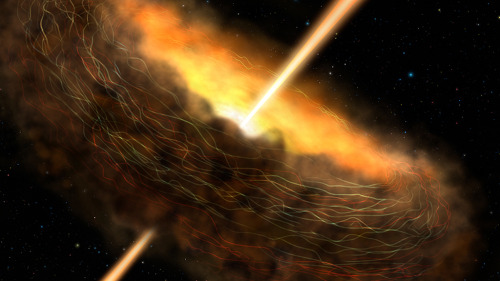
Fear not, the dark, my friend. And let the feast begin! Magnetic fields in the Cygnus A galaxy are trapping material where it is close enough to be devoured by a hungry black hole.
Somewhere Like Home

The planetary system around Epsilon Eridani, a star located about 10 light-years away, has an architecture remarkably similar to our solar system. What’s more, its central star is a younger, fainter version of our Sun.
A Quiet Place

Black holes in many galaxies are actively consuming material, but our Milky Way galaxy’s central black hole is relatively quiet. Observations show magnetic fields may be directing material around, not into, the belly of the beast.
The Great Escape

Ever wonder how material leaves a galaxy? The wind flowing from the center of the Cigar Galaxy is so strong it's pulling a magnetic field — and the mass of 50 to 60 million Suns — with it.
Exploding Star, New Worlds

What happens when a star goes boom? It turns out that supernova explosions can produce a substantial amount of material from which planets like Earth can form.
Stellar Sibling Rivalry

They say siblings need time and space to grow, but here’s one that really needs some room. A newborn star in the Orion Nebula is clearing a bubble of space around it, preventing any new luminous family members from forming nearby.
Clues to Life’s Building Blocks

Radiation from stars is making organic molecules in nebula NGC 7023, also known as the Iris Nebula, larger and more complex. The growth of these molecules is one of the steps that could lead to the emergence of life under the right circumstances.
SOFIA is a modified Boeing 747SP aircraft that allows astronomers to study the solar system and beyond in ways that are not possible with ground-based telescopes. Find out more about the mission at www.nasa.gov/SOFIA.
Make sure to follow us on Tumblr for your regular dose of space: http://nasa.tumblr.com

Up for some virtual cloud watching? ☁️
What do you see in Jupiter's hazy atmosphere?
Our NASA JunoCam mission captured this look at the planet’s thunderous northern region during the spacecraft’s close approach to the planet on Feb. 17, 2020.
Some notable features in this view are the long, thin bands that run through the center of the image from top to bottom. Juno has observed these long streaks since its first close pass by Jupiter in 2016.
Image Credits: Image data: NASA / JPL / SwRI / MSSS Image Processing: Citizen Scientist Eichstädt
Make sure to follow us on Tumblr for your regular dose of space: http://nasa.tumblr.com.
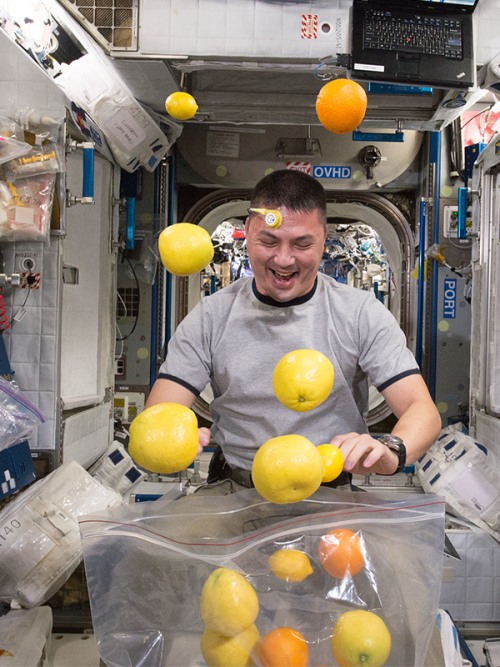
NASA Spotlight: Astronaut Kjell Lindgren
Kjell N. Lindgren was selected by NASA in 2009. Born in Taiwan while his family was stationed overseas, he spent most of his childhood abroad and returned to the U.S. to complete his education and earn a Doctorate of Medicine from the University of Colorado. He is board certified in emergency and aerospace medicine. After serving as the Deputy Crew Surgeon for Space Shuttle mission STS‐130 and Expedition 24, he was selected to join our astronaut corps. Dr. Lindgren flew on the International Space Station from July 2015 to December 2015 and logged 141 days in space. He participated in two spacewalks and in more than a hundred different scientific experiments. In his free time, Dr. Lindgren enjoys spending time with his family, running, reading, movies, photography and amateur astronomy.
He took some time from being a NASA astronaut to answer questions about his life and career! Enjoy:
What is one thing you would take to space that would make life easier?
A real R2 unit, of course! Just kidding, but in the future… Honestly though, life is pretty good on the International Space Station. While it is still a lot like camping (sleeping bags, no running water, rehydrated food) the space station team has really equipped us for success. As you all prepare for YOUR future spaceflight, I would say that the two most useful items I had with me on a daily basis were a pair of scissors and a spoon. The scissors were super useful for cutting plastic wrappers, tape, etc., and opening food packages (much more useful than a knife). And the spoon is the only utensil you need for eating – at least with the food system that we have right now.
Who helped get you to where you are?

Getting this opportunity, becoming an astronaut – that was a team effort for sure. I had so many people walking alongside me on this journey, helping me along the way. My parents set the bit early on – telling me that I could become whatever I wanted through hard work. They really gave me permission to dream big. Teachers and coaches, mentors, co-workers and friends all played a huge part in reaching this goal. Most of all, though, my wife, Kristi and my three kids have been an integral part of this adventure. I would not have this job, and I wouldn’t be successful in it without their love and daily support.
You and your crew mates were the first astronauts to harvest lettuce grown on orbit. How did it taste?

The lettuce tasted like…lettuce, which was a good thing, because if it hadn’t, then it meant we had made a huge mistake. It was so much fun to be a part of that experiment. The payoff, getting to eat fresh grown food on orbit was of course, a lot of fun. But just getting to take care of the lettuce plant, watch it grow in the sterile looking environment of the space station, getting to take care of this living thing on a daily basis, it was good for the soul.
How do you prepare for someone getting hurt or sick in space?
We train at least two crew members on every expedition to be Crew Medical Officers, or CMOs. They spend about 40 – 50 hours learning how to use the medical equipment and procedures on the space station, so that they can essentially serve as an extension of the flight surgeon in mission control. We have equipment and medication to deal with most minor illnesses and injuries. But because we are in low earth orbit, we can evacuate an ill crew member back to Earth in the event of a severe medical issue. This option won’t be available as we push out further from Earth, so we’ll need more rigorous training and a more comprehensive medical system.
How many times did you apply to be an astronaut?

I was very fortunate and got selected on my first try. I have several friends in the office though, who applied 4 or 5 times before being selected. It is amazing to go through the selection process and to meet others who share your dream. Enjoy the experience and keep applying – it is worth it!
How can I improve my chances of being selected to become an astronaut?
I recommend continuing to do things that you enjoy, continue to build experience at work and maybe look for new opportunities in your job that will grow you in your career and grow you as a leader. But choose opportunities because YOU want to do them, not based on what you think NASA is looking for. There is no one path or experience that leads to becoming an astronaut. We have an amazing diversity of experience and background in the astronaut office.
What advice do you have for the newest astronauts?

Enjoy the journey! Spaceflight is amazing, but even as astronauts, most of us spend 95% of our career on the ground. Enjoy every part of the job, supporting missions as a Spacecraft Communicator (CapCom), verifying procedures for a repair or training for a spacewalk. It is amazing to be a part of the team that launches and supports humans living and working in space. It is an amazing thing.
Which is more exciting: spacewalking or skydiving?

Skydiving was pretty amazing. I got to do quite a bit of it as a member of the Air Force Academy parachute team. But there is nothing quite like doing a spacewalk. It is an indescribable experience, putting hundreds of hours of training to work, the physical and mental challenge of operating in that harsh environment. But the view outside the space station, of the Earth, the stars, the structure of the space station – it was a highlight of my time in space and something I will never forget.
What's the most interesting part about training with the Dragon capsule?
It has been awesome working with the NASA and SpaceX teams as we are preparing to launch in the Crew Dragon capsule. My favorite part of the experience has always been and continues to be the people. Safely sending humans to space and back is one of the most difficult things humanity has ever done. That challenge attracts the best and brightest people from across our country. Getting to work with those folks at NASA and at SpaceX, to experience their enthusiasm, dedication and ingenuity on a daily basis is a gift. It has also been a lot of fun seeing a different approach to human spaceflight. I’m very familiar with how NASA and the Russian Space Agency Roscosmos operate. It has been fun seeing a different perspective and approach.
Can you share your favorite photo or video that you took in space?

Yes! This is my favorite photo of the Milky Way, with a lightning strike illuminating a solar array.
Thanks Dr. Lindgren, and good luck on your next spaceflight!
Make sure to follow us on Tumblr for your regular dose of space: http://nasa.tumblr.com.
Cosmic Couples and Devastating Breakups

Relationships can be complicated — especially if you’re a pair of stars. Sometimes you start a downward spiral you just can’t get out of, eventually crash together and set off an explosion that can be seen 130 million light-years away.
For Valentine’s Day, we’re exploring the bonds between some of the universe’s peculiar pairs … as well as a few of their cataclysmic endings.
Stellar Couples
When you look at a star in the night sky, you may really be viewing two or more stars dancing around each other. Scientists estimate three or four out of every five Sun-like stars in the Milky Way have at least one partner. Take our old north star Thuban, for example. It’s a binary, or two-star, system in the constellation Draco.

Alpha Centauri, our nearest stellar neighbor, is actually a stellar triangle. Two Sun-like stars, Rigil Kentaurus and Toliman, form a pair (called Alpha Centauri AB) that orbit each other about every 80 years. Proxima Centauri is a remote red dwarf star caught in their gravitational pull even though it sits way far away from them (like over 300 times the distance between the Sun and Neptune).

Credit: ESO/Digitized Sky Survey 2/Davide De Martin/Mahdi Zamani
Sometimes, though, a stellar couple ends its relationship in a way that’s really disastrous for one of them. A black widow binary, for example, contains a low-mass star, called a brown dwarf, and a rapidly spinning, superdense stellar corpse called a pulsar. The pulsar generates intense radiation and particle winds that blow away the material of the other star over millions to billions of years.

Black Hole Beaus
In romance novels, an air of mystery is essential for any love interest, and black holes are some of the most mysterious phenomena in the universe. They also have very dramatic relationships with other objects around them!
Scientists have observed two types of black holes. Supermassive black holes are hundreds of thousands to billions of times our Sun’s mass. One of these monsters, called Sagittarius A* (the “*” is pronounced “star”), sits at the center of our own Milky Way. In a sense, our galaxy and its black hole are childhood sweethearts — they’ve been together for over 13 billion years! All the Milky-Way-size galaxies we’ve seen so far, including our neighbor Andromeda (pictured below), have supermassive black holes at their center!

These black-hole-galaxy power couples sometimes collide with other, similar pairs — kind of like a disastrous double date! We’ve never seen one of these events happen before, but scientists are starting to model them to get an idea of what the resulting fireworks might look like.

One of the most dramatic and fleeting relationships a supermassive black hole can have is with a star that strays too close. The black hole’s gravitational pull on the unfortunate star causes it to bulge on one side and break apart into a stream of gas, which is called a tidal disruption event.

The other type of black hole you often hear about is stellar-mass black holes, which are five to tens of times the Sun’s mass. Scientists think these are formed when a massive star goes supernova. If there are two massive stars in a binary, they can leave behind a pair of black holes that are tied together by their gravity. These new black holes spiral closer and closer until they crash together and create a larger black hole. The National Science Foundation’s LIGO project has detected many of these collisions through ripples in space-time called gravitational waves.

Credit: LIGO/T. Pyle
Here’s hoping your Valentine’s Day is more like a peacefully spiraling stellar binary and less like a tidal disruption! Learn how to have a safe relationship of your own with black holes here.
Make sure to follow us on Tumblr for your regular dose of space: http://nasa.tumblr.com
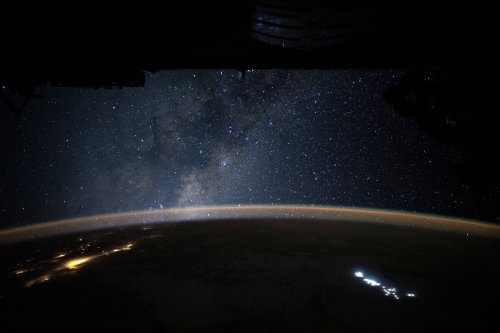
“We saw to the edge of all there is—
So brutal and alive it seemed to comprehend us back.”
-Tracy K. Smith, US Poet Laureate
Some pictures are worth a thousand words and some a thousand thoughts. On Jan. 31, astronaut Christina Koch shared this emotional view and quote from the International Space Station. Enjoy.
Make sure to follow us on Tumblr for your regular dose of space: http://nasa.tumblr.com
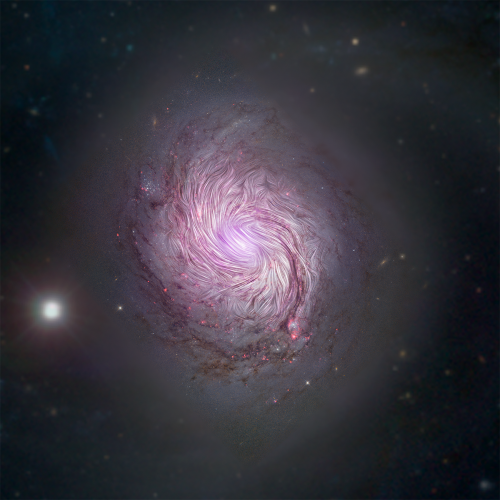
Completely invisible, yet unbelievably influential. 💫
According to new research from our Stratospheric Observatory for Infrared Astronomy (SOFIA), spiral galaxies like the Milky Way are shaped by magnetic fields. These magnetic fields are invisible to the human eye.
However, by combining imagery from our Hubble Space Telescope, the Nuclear Spectroscopic Array and the Sloan Digital Sky Survey, the magnetic fields become apparent. In this image, scientists measured the magnetic fields along the spiral arms of the galaxy called NGC 1068. The fields are shown as streamlines that closely follow the circling arms.
Image Credit: NASA/SOFIA; NASA/JPL-Caltech/Roma Tre Univ.
Make sure to follow us on Tumblr for your regular dose of space: http://nasa.tumblr.com.
Is there such thing as a ‘gentle black hole’ (as in Interstellar) that would one day be a candidate for sending probes? Or is it a lost cause?


#InternationalCatDay? Try #IntergalacticCatDay.
Check out features of our feline friends that have come to life as interstellar phenomena!
Pictured first, the Cat’s Paw Nebula is located about 4,200-5,500 light-years from Earth – situated in our very own Milky Way Galaxy. It was named for the large, round features that create the impression of a feline footprint and was captured by our Spitzer Space Telescope. After gas and dust inside the nebula collapse to form stars, the stars may in turn heat up the pressurized gas surrounding them. This process causes the gas to expand into space and form the bright red bubbles you see. The green areas show places where radiation from hot stars collided with large molecules called "polycyclic aromatic hydrocarbons," causing them to fluoresce.
Next, you’ll find the Cat’s Eye Nebula. Residing 3,000 light-years from Earth, the Cat’s Eye represents a brief, yet glorious, phase in the life of a sun-like star. This nebula's dying central star may have produced the simple, outer pattern of dusty concentric shells by shrugging off outer layers in a series of regular convulsions. To create this view, Hubble Space Telescope archival image data have been reprocessed. Compared to well-known Hubble pictures, the alternative processing strives to sharpen and improve the visibility of details in light and dark areas of the nebula and also applies a more complex color palette. Gazing into the Cat's Eye, astronomers may well be seeing the fate of our sun, destined to enter its own planetary nebula phase of evolution ... in about 5 billion years.
Make sure to follow us on Tumblr for your regular dose of space: http://nasa.tumblr.com.
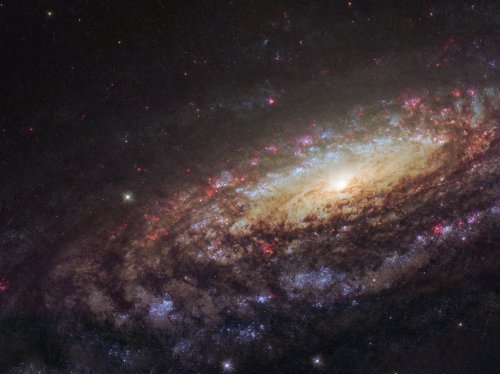
Say hello to spiral galaxy NGC 7331👋
Happy National Twin Day!
The majestic spiral galaxy NGC 7331 is almost like a long lost twin to our very own Milky Way. In this close-up, the galaxy’s magnificent spiral arms feature dark, obscuring dust lanes, bright bluish clusters of massive young stars and the telltale reddish glow of active star-forming regions. The yellowish central region harbors populations of older, cooler stars. Like in the Milky Way, a supermassive black hole lies at the galaxy’s core.
Our Hubble Space Telescope took this image while observing a supernova explosion — the fiery death of a massive star — within NGC 7331. Astronomers noted that the supernova, called SN 2014C, experienced a dramatic, hasty transformation that involved a significant upsurge in hydrogen content. This observation provided a rare chance to gain insight into the final stages of massive stars.
NGC 7331 was discovered in 1784 by famed astronomer William Herschel, who discovered the planet Uranus. It was originally classified as a nebula, which is an interstellar cloud of gas and dust, because no one knew that other galaxies existed until the 20th century. It turns out that NGC 7331 and the Milky Way are among billions and billions of galaxies in the universe!
Make sure to follow us on Tumblr for your regular dose of space: http://nasa.tumblr.com.
Strap in for a Tour of the Milky Way

The night sky isn’t flat. If you traveled deep into this part of the sky at the speed of the radio waves leaving this tower, here are some places you could reach.
Jupiter: Travel time – 35 minutes, 49 seconds.

The closest object in this view is the planet Jupiter, brilliant now in the evening sky…and gorgeous when seen up close by our Juno spacecraft. Distance on the night this picture was taken: 400 million miles (644 million kilometers).
Saturn: Travel time – one hour and 15 minutes.

The next closest is Saturn, another bright “star” in this summer’s sky. On the right, one of the Cassini spacecraft’s last looks. Distance: 843 million miles (1.3 billion kilometers).
Pluto: Light-speed travel time from the radio tower – four hours, 33 minutes.

It’s not visible to the unaided eye, but Pluto is currently found roughly in this direction. Our New Horizons space mission was the first to show us what it looks like. Distance: more than 3 billion miles.
F-type star, HD 169830: Light-speed travel time from the radio tower – 123 years.

Within this patch of sky, there’s an F-type star called HD 169830. At this speed, it would take you 123 years to get there. We now know it has at least two planets (one of which is imagined here) — just two of more than 4,000 we've found…so far.
The Lagoon Nebula: Light-speed travel time from the radio tower – 4,000 years.

If you look closely, you’ll see a fuzzy patch of light and color here. If you look *really* closely, as our Hubble Space Telescope did, you’ll see the Lagoon Nebula, churning with stellar winds from newborn stars.
Black hole, Sagittarius A*: Light-speed travel time from the radio tower – 26,000 years.

In 26,000 years, after passing millions of stars, you could reach the center of our galaxy. Hidden there behind clouds of dust is a massive black hole. It’s hidden, that is, unless you use our Chandra X-ray Observatory which captured the x-ray flare seen here.

The next time you’re under a deep, dark sky, don’t forget to look up…and wonder what else might be out there.
Make sure to follow us on Tumblr for your regular dose of space: http://nasa.tumblr.com.
What’s Up For August 2018?
The summer Perseids are here!

The Perseid meteor shower is the best of the year! It peaks on a Moonless summer night from 4 p.m. EST on August 12 until 4 a.m. EST on August 13.

Because the new Moon falls near the peak night, the days before and after the peak will also provide nice, dark skies. Your best window of observation is from a few hours after twilight until dawn, on the days surrounding the peak.

Unlike most meteor showers, which have a short peak of high meteor rates, the Perseids have a very broad peak, as Earth takes more than three weeks to plow through the wide trail of cometary dust from comet Swift-Tuttle.

The Perseids appear to radiate from the constellation Perseus, visible in the northern sky soon after sunset this time of year. Observers in mid-northern latitudes will have the best views.

You should be able to see some meteors from July 17 to August 24, with the rates increasing during the weeks before August 12 and decreasing after August 13.

Observers should be able to see between 60 and 70 per hour at the peak. Remember, you don't have to look directly at the constellation to see them. You can look anywhere you want to-even directly overhead.

Meteor showers like the Perseids are caused by streams of meteoroids hitting Earth's atmosphere. The particles were once part of their parent comet-or, in some cases, from an asteroid.

The parade of planets Venus, Jupiter, Saturn and Mars--and the Milky Way continue to grace the evening sky, keeping you and the mosquitoes company while you hunt for meteors.

Watch the full What’s Up for August Video:
There are so many sights to see in the sky. To stay informed, subscribe to our What’s Up video series on Facebook.
Make sure to follow us on Tumblr for your regular dose of space: http://nasa.tumblr.com
NASA Astronaut Scott Kelly shared this incredible video tonight, August 11, showing "our galactic home" with the stars of the Milky Way. Kelly is living and working off the Earth, for the Earth aboard the station for a yearlong mission. Traveling the world more than 220 miles above the Earth, and at 17,500 mph, he circumnavigates the globe more than a dozen times a day conducting research about how the body adapts and changes to living in space for a long duration.
Video credit: NASA





